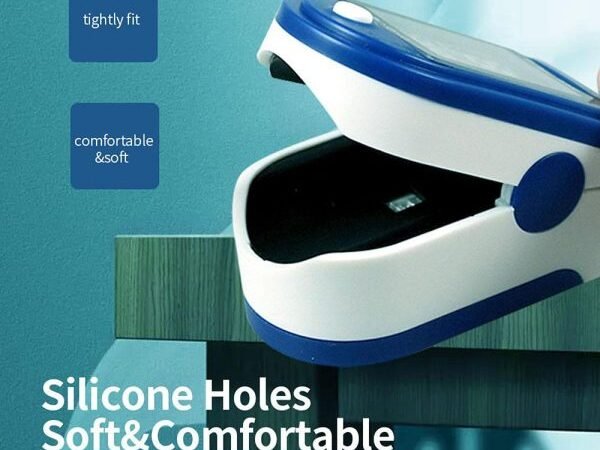Your cart is currently empty!
Pulse oximeters are non-invasive medical devices that are primarily used to measure the oxygen saturation levels in a person’s blood. By utilizing infrared sensors, a fingertip oxygen monitor can accurately detect the color of the blood, thus determining the percentage of oxygen bound to hemoglobin in the red blood cells.
This measurement is critical in assessing a patient’s respiratory function, ensuring that adequate oxygen is circulating throughout the body.
The primary function of a blood oxygen saturation detector is to provide immediate feedback on a person’s oxygen levels, offering critical data that can influence medical decisions. In healthcare settings, pulse oximeters play a vital role in monitoring patients with conditions such as chronic obstructive pulmonary disease (COPD), asthma, and other pulmonary or cardiac diseases.
By receiving continuous readings of their blood oxygen levels, healthcare professionals can make informed choices regarding treatments and interventions.
In recent years, the popularity of fingertip pulse oximeters has surged, particularly among individuals managing chronic respiratory conditions or those concerned about their blood oxygen levels.
With the growing awareness of health and wellness, these portable monitors have become common household items, providing users with a simple method for self-monitoring.
Patients who may experience fluctuations in their oxygen saturation can benefit from having a pulse oximeter at home, allowing them to track their health proactively and alerting them to any concerning trends before they require professional medical attention.
Ultimately, the increased accessibility of these devices enables more individuals to take charge of their health, promoting a better understanding of their conditions and enhancing their overall quality of life. Whether in a clinical environment or at home, pulse oximeters serve as essential tools in the ongoing effort to maintain optimal respiratory health.
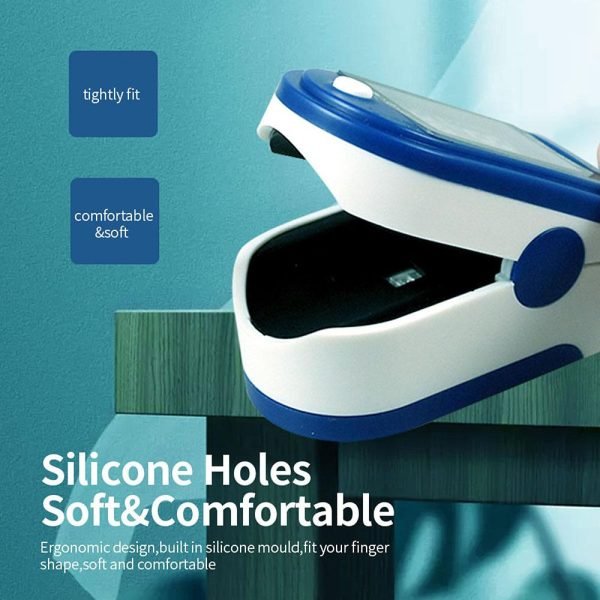
How Do Fingertip Pulse Oximeters Work?
Fingertip pulse oximeters are sophisticated yet user-friendly devices that leverage the principles of light absorption to assess blood oxygen saturation levels.
These compact instruments typically consist of a small clip that attaches to the fingertip, utilizing light-emitting diodes (LEDs) to shine red and infrared light through the skin.
The core principle behind their operation lies in the differing absorption characteristics of oxyhemoglobin and deoxyhemoglobin—forms of hemoglobin that either carry or do not carry oxygen.
As the light passes through the fingertip, some of it is absorbed by the blood, while the remaining light is detected by a sensor on the opposite side of the device.
The pulse oximeter calculates the ratio of absorbed light at specific wavelengths corresponding to oxygen-saturated and oxygen-depleted hemoglobin.
Through this comparison, the device determines the percentage of blood oxygen saturation in a matter of seconds, providing users with crucial insights into their respiratory health.
One of the standout features of fingernail pulse oximeters is their non-invasive nature, enabling individuals to monitor their oxygen levels without the need for needles or blood samples.
This quality makes the fingertip oxygen monitor a convenient alternative for both healthcare professionals and at-home users. Additionally, the ease of use is paramount; most devices require only a simple attachment to the fingertip and a press of a button to initiate measurement.
The importance of accurate readings cannot be overstated, as they provide vital information for assessing lung function and overall health.
Fluctuations in blood oxygen saturation can be indicative of various health conditions, making it essential for individuals to have reliable access to data provided by such blood oxygen saturation detectors. Understanding how fingertip pulse oximeters work equips users with the tools they need to monitor their well-being effectively.
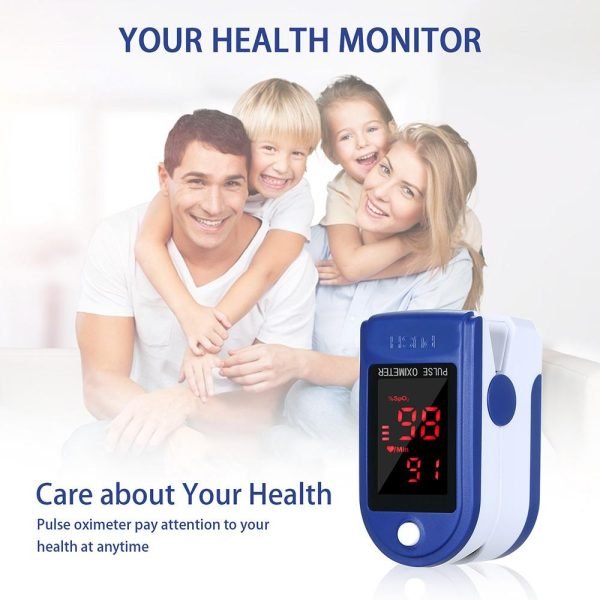
The Importance of Monitoring Blood Oxygen Levels
Monitoring blood oxygen levels is crucial for maintaining overall health and well-being. Oxygen saturation refers to the percentage of hemoglobin binding sites in the bloodstream occupied by oxygen.
When levels fall below the normal range, a condition known as hypoxemia can occur. This condition can lead to severe consequences if not addressed promptly.
Various respiratory conditions, such as Chronic Obstructive Pulmonary Disease (COPD), asthma, and even infectious diseases like COVID-19, can significantly impair oxygen levels in the body.
For individuals living with COPD, monitoring oxygen saturation is vital. As the disease progresses, the lungs lose their ability to transfer oxygen into the bloodstream effectively.
A fingertip oxygen monitor can help track these changes, alerting patients when their blood oxygen levels dip below a safe threshold. Similarly, asthma patients may experience sudden attacks that can cause rapid drops in oxygen saturation.
Regular monitoring using a blood oxygen saturation detector is essential for early intervention and management of symptoms.
In the context of illnesses like COVID-19, monitoring blood oxygen levels has become increasingly relevant. Patients suffering from severe cases may experience significant decreases in oxygen saturation, warranting immediate medical attention.
Using a pulse oximeter can be a simple yet effective way to detect declining oxygen levels early on. These devices allow for convenient at-home monitoring, empowering patients to play an active role in their healthcare.
For at-risk individuals, including those with existing respiratory conditions or experiencing symptoms of respiratory illness, regular monitoring should not be overlooked.
A fingertip pulse oximeter serves as a valuable tool in these scenarios, promoting proactive health management and timely medical intervention. Ultimately, understanding the significance of blood oxygen monitoring and utilizing a reliable blood oxygen saturation detector can be pivotal in maintaining respiratory health and preventing serious complications.
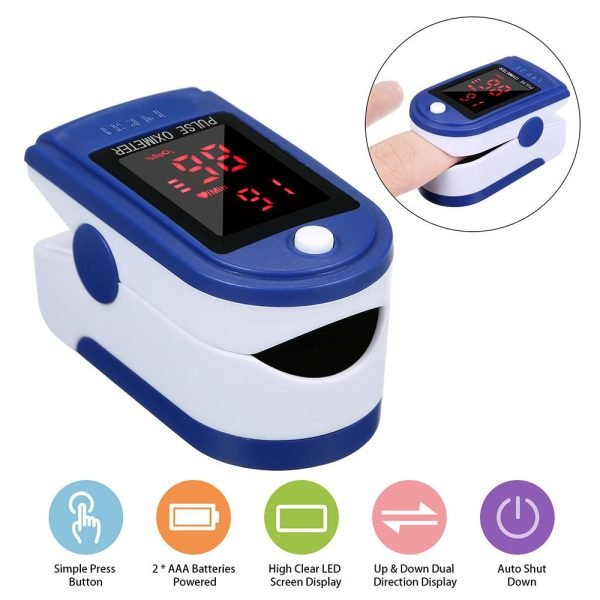
Choosing the Right Fingertip Pulse Oximeter
When selecting a fingertip pulse oximeter, it is essential to consider several key features that will ensure accurate and reliable readings of your blood oxygen saturation levels.
The primary function of this device is to measure oxygen levels and heart rates, so accuracy is critical. Look for models that have been tested and certified by reputable health organizations, as they provide trustworthy measurements, which are vital for monitoring your health.
Ease of use is another crucial factor. A user-friendly fingertip oxygen monitor should have a straightforward operating interface, allowing even those with limited technical skills to take measurements effortlessly. Many devices now offer one-button operation, making them convenient for frequent use.
Display quality can greatly affect your experience with the pulse oximeter. Opt for models with clear, easy-to-read displays, especially in varying lighting conditions. Larger screens often show both blood oxygen saturation and pulse rate simultaneously, which can be particularly helpful for quick assessments.
Battery life is a practical consideration. An efficient battery ensures that your fingertip pulse oximeter is constantly ready for use without requiring frequent replacements. It is advisable to choose a device with rechargeable options or long-lasting batteries, minimizing the hassle of maintenance.
In addition to basic functions, consider additional features such as data storage, Bluetooth connectivity, or mobile app integration. These capabilities allow you to track your readings over time, which can be beneficial for individuals who need to monitor their health consistently.
Understanding how to read the results is essential in utilizing a blood oxygen saturation detector effectively. Familiarize yourself with normal oxygen saturation ranges, which typically lie between 95% and 100%. If readings consistently fall below this range, it may indicate a need for medical consultation.
Overall, by taking these factors into account, you can choose a fingertip pulse oximeter that meets your individual needs and aids in effective health monitoring.
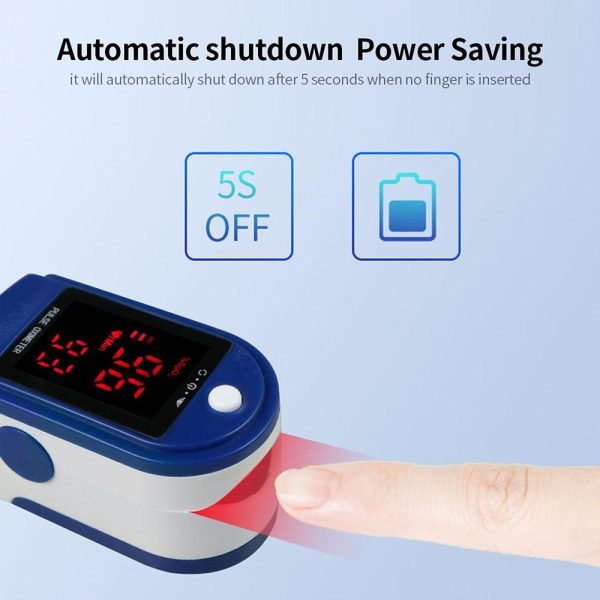
How to Use a Fingertip Pulse Oximeter
Using a fingertip pulse oximeter is a straightforward process, but it is essential to follow specific steps to ensure accurate readings of blood oxygen saturation levels. Begin by selecting a comfortable environment free of excessive noise and distractions.
Before you use these devices, it is advisable to wash your hands to ensure that they are clean for optimal performance. When ready, turn on the pulse oximeter and wait for it to initialize.
Next, position your index or middle finger into the designated slot of the fingertip oxygen monitor. The sensor should fit snugly but not too tightly, avoiding excessive pressure that could obstruct blood flow.
Ensure that the light source of the pulse oximeter is properly aligned with your finger, as this is crucial for obtaining accurate readings. If you are wearing nail polish, particularly darker colors, it is advisable to remove it, as this can interfere with the sensor’s ability to read blood oxygen saturation accurately.
Once the finger is in place, remain still and refrain from moving your hand or finger. Any jitter or movement can cause fluctuations in the readings, leading to inaccurate results. It is also crucial to monitor the temperature of your fingers, as cold fingers can yield improper readings.
Before taking a measurement, ensure your hands are warm. Depending on the model, readings typically stabilize within a few seconds, but it may take longer in some cases. Always read the device instruction manual for device-specific operational tips.
Finally, after reading the pulse oximeter, carefully remove your finger and document the oxygen saturation level and pulse rate displayed on the screen. Regular use of the fingertip oxygen monitor can help you track your respiratory health effectively.
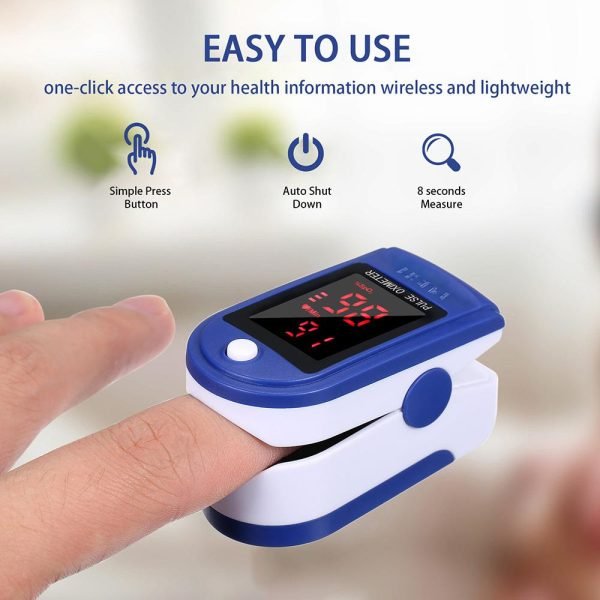
Common Misconceptions About Pulse Oximeters
Despite the increasing popularity of fingertip pulse oximeters as a non-invasive method for measuring blood oxygen saturation, a number of misconceptions persist.
Many individuals erroneously believe that these devices can be used as substitutes for comprehensive medical assessments. While a fingertip oxygen monitor is a useful tool for preliminary checks, it should not replace professional medical advice or diagnostics.
It is essential to understand that pulse oximeters offer a snapshot in time and should be part of a broader assessment process conducted by healthcare professionals.
Another misconception is the perceived accuracy of these devices. While pulse oximeters can provide fairly reliable measurements in healthy individuals, their accuracy may vary under certain conditions.
Factors such as skin pigmentation, ambient light, and motion can significantly affect readings. For example, individuals with darker skin tones may experience discrepancies in oxygen saturation readings compared to those with lighter skin, leading to potential misunderstandings about actual blood oxygen levels. Hence, it is crucial to interpret the results with caution and seek further evaluations when necessary.
Additionally, there is confusion regarding what constitutes normal levels of oxygen saturation. Many people are unaware that a normal range typically lies between 95% to 100%.
Readings below 90% are generally considered a cause for concern and may indicate potential health issues. However, many users mistakenly assume that any reading outside the “normal” range is alarming, rather than understanding the nuances of individual health conditions and their implications.
In conclusion, addressing these misconceptions is essential for the effective use of fingertip pulse oximeters. By recognizing their limitations and understanding how to interpret the readings accurately, users can make informed decisions regarding their health while utilizing these convenient blood oxygen saturation detectors.
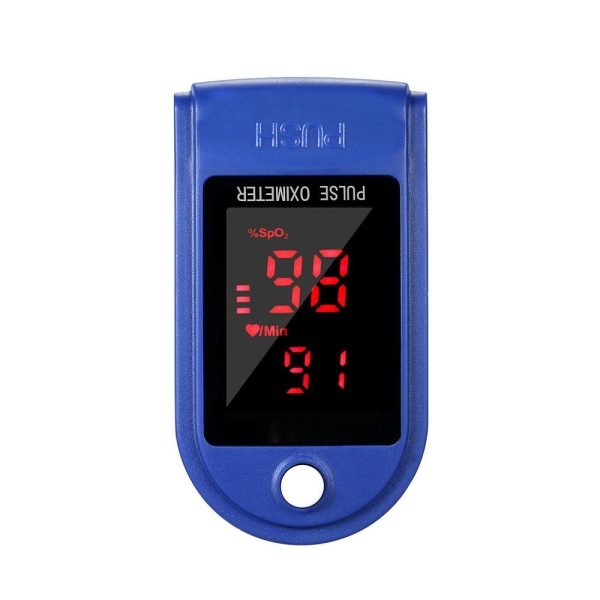
The Role of Pulse Oximeters in Telehealth
In recent years, the integration of pulse oximeters into telehealth frameworks has significantly transformed the management of chronic illnesses. This evolution has become increasingly vital as healthcare evolves towards more accessible and efficient remote monitoring solutions.
A fingertip oxygen monitor serves as an indispensable tool within telehealth, allowing both patients and healthcare providers to observe vital health parameters from the comfort of home.
Pulse oximeters, which measure blood oxygen saturation levels, enhance the ability of healthcare professionals to track a patient’s respiratory health without necessitating an in-person visit.
For individuals with chronic respiratory issues, such as chronic obstructive pulmonary disease (COPD) or severe asthma, regular monitoring of blood oxygen levels is critical.
The ability to utilize a blood oxygen saturation detector at home empowers patients to actively participate in their healthcare management and report data back to their providers in real time.
Additionally, telehealth consultations can be enhanced by the incorporation of data from these portable devices. Healthcare providers can assess the information gathered by the fingertip oxygen monitor, allowing for timely adjustments to treatment plans based on accurate readings. This immediacy often leads to improved patient outcomes and the prevention of exacerbations in health conditions.
The convenience of using a pulse oximeter facilitates better communication between patients and practitioners. It allows for a proactive approach to managing health, where changes in a patient’s condition can be detected and addressed swiftly.
Furthermore, the data collecting features of these devices mean that healthcare providers can monitor trends over time, leading to more informed medical decisions.
In conclusion, the role of pulse oximeters in telehealth highlights the potential of technology to improve chronic illness management. As patients gain access to reliable blood oxygen saturation readings remotely, the healthcare system can address complications more effectively and maintain a continuous dialogue between patients and providers.
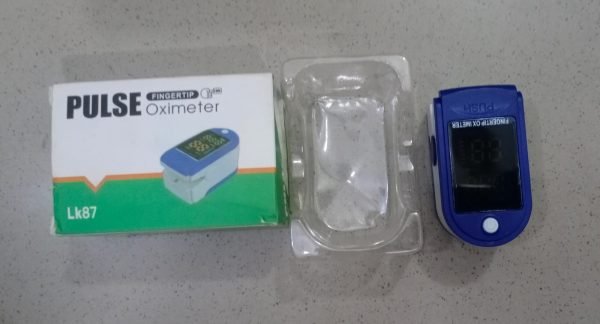
Incorporating Pulse Oximeters into Daily Life
Fingertip pulse oximeters have emerged as essential tools for monitoring oxygen saturation levels conveniently and accurately, making it vital to incorporate their use into your daily health routines.
A practical approach to utilizing a blood oxygen saturation detector is to measure your levels at consistent times throughout the day. For instance, you might consider taking readings in the morning upon waking, after physical activities, or during periods of respiratory distress. This regularity helps in understanding your baseline levels and any deviations that might arise over time.
Recording results is equally important in making informed health decisions. Maintain a log of your readings, noting the date, time, activity prior to measuring, and any symptoms experienced.
This log will not only offer insight into your oxygenation trends but can also provide valuable information to your healthcare provider. In conjunction with these readings, it is advisable to be aware of the normal oxygen saturation range, typically between 95% and 100% for healthy individuals. Values consistently below this range could necessitate further medical consultation.
Furthermore, while fingertip oxygen monitors are user-friendly and non-invasive, they should not replace professional medical advice or treatments. If you notice persistent low readings or if any symptoms such as shortness of breath, dizziness, or changes in your overall condition, it is crucial to consult your healthcare provider immediately.
They can offer insights tailored to your specific health status and needs. By integrating these practices into your daily routine, you can use your pulse oximeter effectively, supporting your health and well-being with each measurement.
Conclusion and Future of Fingertip Pulse Oximeters
In the context of modern healthcare, fingertip pulse oximeters have emerged as invaluable tools for monitoring blood oxygen saturation. These compact devices are essential for individuals with respiratory conditions, athletes, and anyone seeking to maintain optimal health.
By providing real-time insights into oxygen levels, fingertip oxygen monitors empower users to make informed decisions regarding their well-being. Throughout this guide, we have explored the functionality, benefits, and usage of these reliable blood oxygen saturation detectors.
Looking ahead, the future of pulse oximeter technology appears promising, with ongoing innovations that may improve their accuracy and accessibility. Advances in sensor technology, for instance, may enable better readings in diverse populations and under various conditions. The integration of artificial intelligence in fingertip pulse oximeters is another exciting development.
AI algorithms can analyze blood oxygen data more effectively, alerting users to potential health issues. Additionally, the possibility of combining pulse oximeters with other health-monitoring devices, such as smartwatches, will likely enhance users’ overall health management, enabling them to access a comprehensive view of their physiological signals.
Furthermore, with increasing awareness of the importance of monitoring blood oxygen levels, we can anticipate a surge in demand for fingertip pulse oximeters.
This growing interest has led to competitive advancements among manufacturers, resulting in a variety of options available on the market that cater to different needs and budgets.
As these devices evolve, we can expect improved user interfaces and better connectivity features that will make it easier for individuals to share their data with healthcare providers.
Emphasizing their role in preventive health care, fingertip pulse oximeters have established themselves as vital instruments for tracking oxygen levels. Their convenience and reliability pave the way for a healthier future, where proactive health monitoring becomes the norm.

